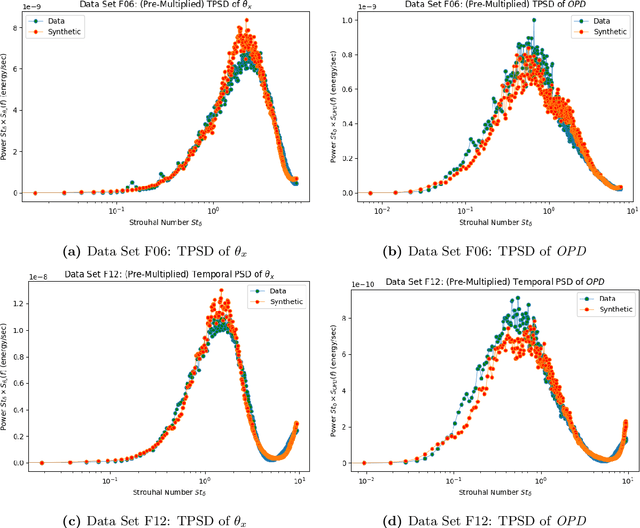Data driven synthetic wavefront generation for boundary layer data
Paper and Code
Sep 07, 2024
Disturbances such as atmospheric turbulence and aero-optic effects lead to wavefront aberrations, which degrade performance in imaging and laser propagation applications. Adaptive optics (AO) provide a method to mitigate these effects by pre-compensating the wavefront before propagation. However, development and testing of AO systems requires wavefront aberration data, which is difficult and expensive to obtain. Simulation methods can be used to generate such data less expensively. For atmospheric turbulence, the Kolmogorov-Taylor model provides a well-defined power spectrum that can be combined with the well-known angular spectrum method to generate synthetic phase screens. However, as aero-optics cannot be similarly generalized, this process cannot be applied to aero-optically relevant phenomena. In this paper, we introduce ReVAR (Re-Whitened Vector Auto-Regression), a novel algorithm for data-driven aero-optic phase screen generation. ReVAR trains on an input time-series of spatially and temporally correlated wavefront images from experiment and then generates synthetic data that captures the statistics present in the experimental data. The first training step of ReVAR distills the input images to a set of prediction weights and residuals. A further step we call re-whitening uses a spatial principal component analysis (PCA) to whiten these residuals. ReVAR then uses a white noise generator and inverts the previous transformation to construct synthetic time-series of data. This algorithm is computationally efficient, able to generate arbitrarily long synthetic time-series, and produces high-quality results when tested on turbulent boundary layer (TBL) data measured from a wind tunnel experiment. Using measured data for training, the temporal power spectral density (TPSD) of data generated using ReVAR closely matches the TPSD of the experimental data.
 Add to Chrome
Add to Chrome Add to Firefox
Add to Firefox Add to Edge
Add to Edge